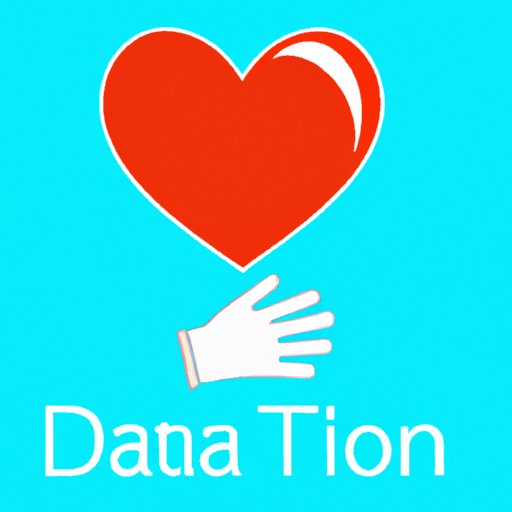Introduction
Donating one’s body to science is an incredible act of generosity that can have far-reaching impacts. It is an opportunity for individuals to be part of something bigger than themselves and contribute to the advancement of science and medicine. However, many people are unaware of what actually happens to their bodies after they donate them to science. This article seeks to explore what happens to bodies donated to science, including the process of donating a body, the role of donated bodies in medical research, and the impact of donated bodies in science.
A Look Inside: What Happens to Donated Bodies in Science?
Donating a body to science is a noble act that enables researchers to gain insights into the human body and use those findings to improve the health and wellbeing of individuals around the world. But what exactly happens to these donated bodies once they are given to science? Let’s take a closer look at the process of donating a body to science, the role of donated bodies in medical research, and the impact of donated bodies in science.
Exploring the Process of Donating a Body to Science
The process of donating a body to science varies depending on the institution, but generally involves filling out paperwork, making arrangements with the institution, and providing information about the donor. According to the Anatomical Gift Program at Stanford University, “The paperwork required will include a written consent form as well as a medical history questionnaire.” The paperwork also includes information about any special instructions the donor may have for their body, such as whether or not it should be cremated after its use in science is finished.
Examining the Role of Donated Bodies in Medical Research
Donated bodies play a critical role in medical research and education. According to a study published in the American Journal of Clinical Pathology, “Human cadaveric tissue is essential for the development of new surgical techniques, training of surgeons, and understanding of disease processes.” Donated bodies are also used to create prosthetic devices and surgical models, which allow surgeons to practice complex procedures before they are performed on live patients. Additionally, donated bodies are used to test new drugs and treatments, giving researchers invaluable data that helps them develop better treatments for a variety of diseases and conditions.
Exploring the Impact of Donated Bodies in Science
The impact of donated bodies in science is immense. Not only do donated bodies provide researchers with valuable insight into the human body, but they also enable medical students to gain a better understanding of anatomy and physiology. According to an article from the National Institutes of Health (NIH), “The use of cadavers for educational purposes is essential for medical students to gain a thorough understanding of anatomy and physiology.” Donated bodies also give researchers the opportunity to make groundbreaking discoveries that could lead to new treatments and cures for diseases.
The Journey of a Donated Body: How Science Uses the Gift of Donation
Now that we’ve explored the process of donating a body to science and the role of donated bodies in medical research, let’s take a closer look at the journey of a donated body and how science uses this generous gift. From the moment a body is donated, it begins a journey that can have profound implications for the advancement of science and medicine.
Understanding the Process of Donating a Body for Science
As mentioned previously, the process of donating a body for science involves filling out paperwork, making arrangements with the institution, and providing information about the donor. Once all of the paperwork is completed, the donor’s body is transported to the institution where it will be used for research and educational purposes. Depending on the institution, the donor may be able to choose how their body is used and even specify when it should be returned to them for burial.
Exploring the Benefits and Challenges of Donating a Body for Science
There are many benefits to donating a body for science, including the potential to make a lasting impact on the advancement of science and medicine. Additionally, donors often feel a sense of satisfaction knowing that their body has been used to help others. However, there are also some challenges associated with donating a body for science, such as the fact that the donor may never know how their body was used or the results of any research conducted using their body.
An In-Depth Look at the Lives of Donated Bodies in Science
Once a body has been donated to science, it begins a journey that can take years to complete. According to the NIH, donated bodies are typically used for research and educational purposes for two to three years before being returned to the donor’s family for burial. During this time, the body is examined, dissected, and studied by researchers and medical students who are working to advance our understanding of the human body and ultimately improve the health and wellbeing of individuals around the world.
Conclusion
Donating a body to science is an incredible act of generosity that can have far-reaching impacts. It is an opportunity for individuals to be part of something bigger than themselves and contribute to the advancement of science and medicine. This article explored what happens to bodies donated to science, including the process of donating a body, the role of donated bodies in medical research, and the impact of donated bodies in science. Donated bodies play a critical role in medical research and education and can be used to create prosthetic devices, test new drugs and treatments, and provide medical students with a better understanding of anatomy and physiology. Ultimately, donated bodies can have a lasting impact on the advancement of science and medicine.
(Note: Is this article not meeting your expectations? Do you have knowledge or insights to share? Unlock new opportunities and expand your reach by joining our authors team. Click Registration to join us and share your expertise with our readers.)
